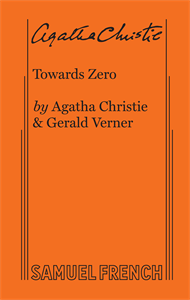
A similar point of view is voiced in the opening chapter of the novel when a group of lawyers are bemused when a retired member of their group emphasises the human aspect of a case: ‘They had considered the people in the case only as regarding their credibility or otherwise as witnesses. I feel like sometimes, in detective mysteries, the characters are more like chess pieces, their only value being in how much they move the plot along. I’ve tried to avoid saying much about the ‘zero hour’ element of the story as it is best to know as little about that as possible.įor readers who prioritise the characterisation in a story, like I do, this book will definitely appeal as the characters are the focus in this story and also human nature. Yet no one could have suspected that it would be Lady Tressilan who would be the one murdered…


Unsurprisingly Kay is less than thrilled to be around Audrey, especially since Nevile pays her a lot of attention and eventually one night things come to a head. Aside from them there is also Mary Aldin, Lady Tressilan’s companion, Audrey’s distant cousin Thomas Royde, who has returned from Malaya and Kay’s Riviera pal, Ted Latimer is also in the area. This is quite understandable since Nevile Strange and his second wife, Kay are there at the same time as Nevile’s first wife, Audrey – a gathering of people no one expected and there is a great deal of speculation over whose idea it was. Whereas one of the character’s argue that ‘the story begins long before that… with all the causes and events that bring people to a certain place at a certain time on a certain day.’ After this point it is though the clock is ticking and that the various characters are ‘going unbeknownst to… towards zero.’ The action mostly takes place in Saltcreek, a seaside location at the home of Lady Tressilan, whose guests and servants are oppressed by the tense and unnerving atmosphere.

The story opens with the ‘zero hour’ premise and the suggestion that detective stories ‘begin in the wrong place,’ i.e. I enjoyed this book when I first read it, not only for its interesting central premise of the ‘Zero hour’ and that ‘the murder is the end,’ rather than the beginning, but I also really enjoyed its characterisation. This book has been a popular one for review this month as the chosen year for Rich’s monthly challenge at Past Offences is 1944 and since I do not have any other books corresponding with this chosen year I too am following the crowd.


 0 kommentar(er)
0 kommentar(er)
